Last Chance to Catch NYC's Holiday Notalgia Train
We met the voices of the NYC subway on our nostalgia ride this weekend!


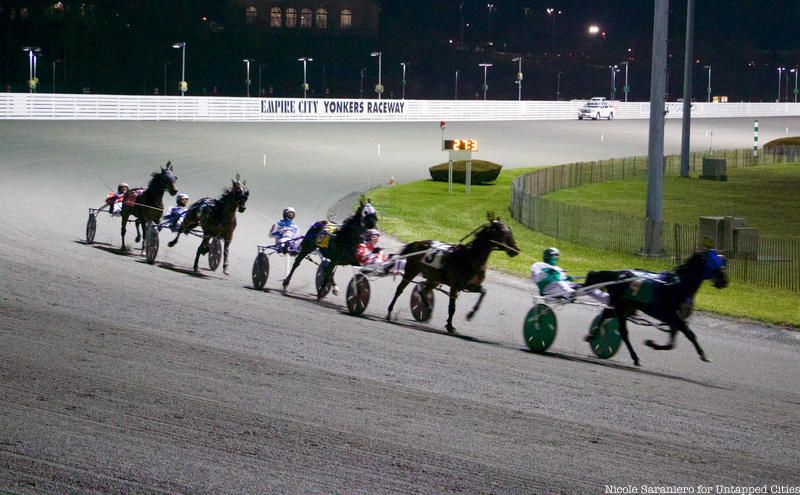
Feeling lucky? At Empire City Casino you can try your hand at hitting the jackpot on the gaming floor or by picking a winning horse at the historic Yonkers Raceway. Located less than two miles from the Bronx, the casino complex boasts more than 5,000 slot machines and hosts twelve live harness races a night, five nights a week, year round. Every race night nearly 100 horses from around the Tri-State area travel to the historic track to carry on the century old racing tradition. Founded in 1899 as the Empire City Track by William H. Clark’s Empire City Trotting Club, the half-mile dirt track at the Raceway was built for standardbred harness racing, a practice that continues to this day.

Champion Horse Seabiscuit, Image via Wikimedia Commons, Seabiscuit Heritage Foundation
Over one million horses have raced at Yonkers Raceway throughout its long history. Though originally built for harness-racing, thoroughbred racing was brought to the track in 1907 by the second owner James Butler and continued until 1943. During that time, some of the most legendary thoroughbreds made history on the track, including the infamous Seabiscuit.
Seabiscuit was a champion thoroughbred racehorse who became the American Horse of the Year in 1938 after he beat Triple-Crown winner War Admiral (who also raced at Yonkers) by four lengths in a special race at Pimlico. He was the top winning racehorse of the 1940s and set a new record at Yonkers Raceway when he won the Scarsdale Handicap in 1936. In 2012, vice president of Empire City at Yonkers Raceway Bob Galterio told Wag Magazine that “Seabiscuit won more stake races at Yonkers’ Empire City than at any other racetrack.” Thoroughbred racing ended at the Raceway when harness racing was reintroduced in 1943.

Driver Jordan Stratton talks with Untapped Cities Insiders in the paddock before a race
Unlike in thoroughbred horse racing, where jockeys need to meet specific height and weight requirements, harness racing drivers do not have such restrictions. Drivers, also unlike jockeys, are not restricted to riding one horse. Drivers are assigned by the horses’ trainers and owners and can be assigned to multiple horses throughout the night. If a driver is assigned to two different horses during the same race, he gets to decide which one he will ride.
When Untapped Cities Insiders visited Yonkers Raceway on a previous behind-the-scenes tour, we got to chat with driver Jordan Stratton, who that night was racing 10 different horses! The drivers are also allowed to wear their own colors no matter which horse they are racing with, whereas in thoroughbred racing the driver wears the owner’s colors.

Drivers’ suits hanging in the locker room
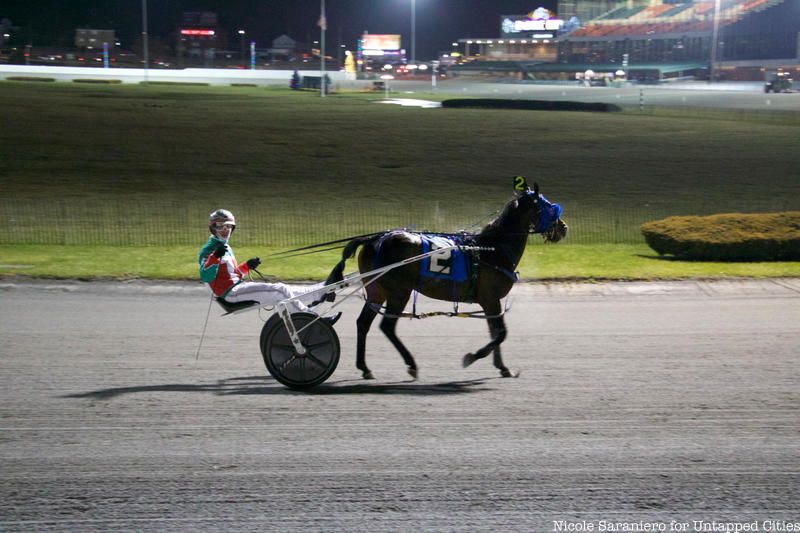
A sulky is the two-wheeled, lightweight cart attached to the horse that drivers ride in. Though sulky is the technical term, most people just call it a race bike. The horses wear different types of sulkies when warming up versus racing. When warming up, the horses are usually taken out by trainers and not the drivers, so the warm up cart has a pouch for the trainers to rest their feet in. During the race, drivers keep their feet up on the sides of the cart so there is no pouch.
You may also notice the straps around the horse’s legs. In harness racing, the horses must keep an even gait, or trot, and are not allowed to break into a gallop. The straps help to maintain this stride and prevent the horses from galloping.

Die-hard racing fans can actually become part of the racetrack at Yonkers Raceway. In very specific circumstances, fans are allowed to scatter ashes on the gravel track. Of course, anyone who wished to do so must obtain permission from the track first. Since Yonkers Raceway is one of the oldest and most historic tracks in the country, it is easy to understand why someone would have this final wish.
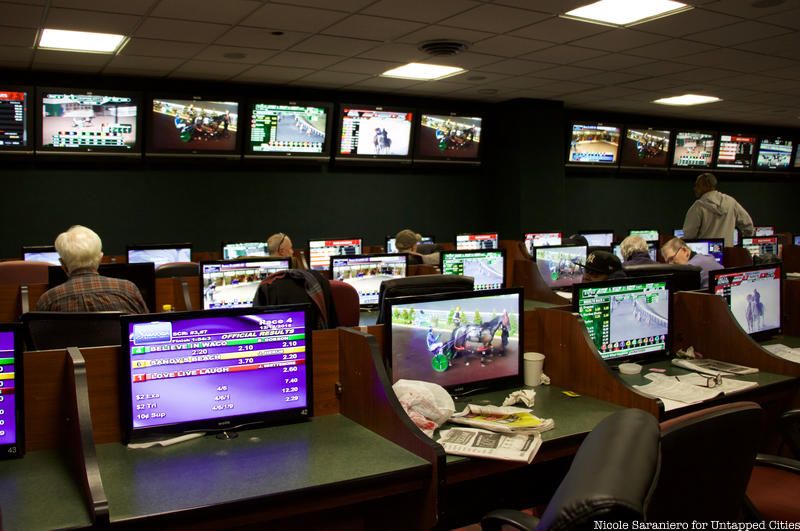
You don’t have to be at Yonkers Raceway to place a bet on your favorite horse. In fact, you don’t even have to be in the United States. The races at Yonkers Raceway are simulcast worldwide, including in countries like France and Australia.
If you do find yourself at the Yonkers Raceway and want to place a bet on a race, say at the Meadowlands or some other track that isn’t Yonkers, you can do that in the simulcast room. There you can take your pick of races to watch and bet on. Old school rules apply in this area, where you leave your stuff is your spot for the day.

Sitting high above the track in a small room atop the grandstand the presiding judge has an amazing view of the entire track. George, who was officiating the races during our visit, said he can also see Manhattan from the judge’s box on a clear night. The judge has many responsibilities throughout and after the race, but before it even starts he has to close the betting. This is done by pushing a doorbell-like button on top of his desk. Once that button is pressed no more bets can be made either in-person with a clerk, online, or through an electronic kiosk.
The judge is surrounded by monitors with replay capabilities and multiple camera angles of the track so he can keep an eye on everything that is going on and re-watch certain moments of the race if needed. In the room next door to the judge is the photo-finish room and there was a photo-finish while we were visiting the box! When that happens, the judge examines the photo and determines the winner. If there is a nose-to-nose-tie it is called a “dead heat” and the horses split the purse, or prize. The judge is also responsible for drawing the horses’ post positions, or where they start on the track. These positions are assigned randomly, as the inside is most advantageous spot. The judge also makes sure all of the horses have a driver.
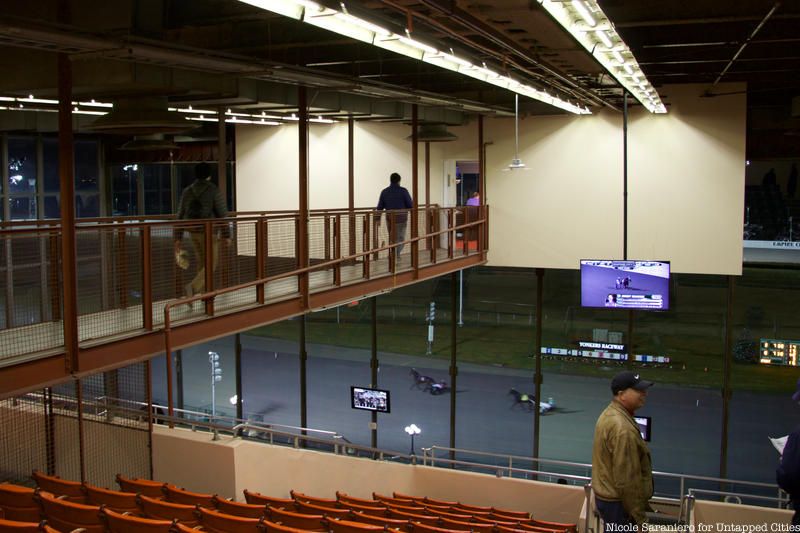

Nancy Reagan and Frank Sinatra at Yonkers Raceway. Photograph Courtesy of Yonkers Raceway
During the heyday of the track in the 1970s, Yonkers Raceway saw a record average daily attendance of 25,800 people! Many of those were big names you would probably still recognize today. Yonkers Raceway has been frequented by the likes of celebrities such as Frank Sinatra and Ed Sullivan, famous athletes like Willie Mays, Mickey Mantle and Jack Dempsey and even presidents including Richard Nixon, Jimmy Carter and Ronald Reagan.
This noteworthy clientele could often be found at the Empire Terrace Restaurant, where each table had a screen to watch the races and great views of the track out of the floor-to-ceiling windows.
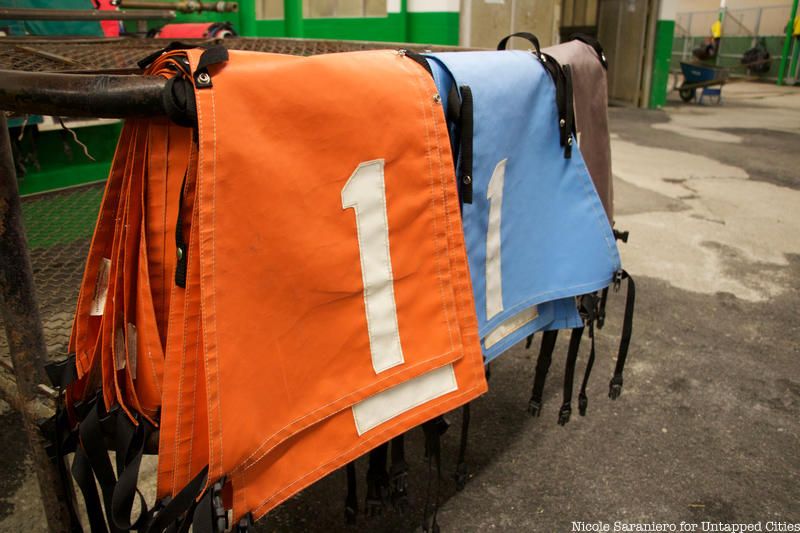
If you are looking for a more reliable way to pick a winner other than just going with your favorite horse name (which is common practice for the uninitiated) there are a few tips we learned on our tour. While watching the horses warm up, if you see one that looks promising, take note of the number and color of its saddle cloth. The color denotes the race number and the numeral denotes the post position, or where it will start the race. If a horse is wearing a blue saddle cloth with the number three for example, that means it will be the number three horse in the second race. Lower numbers usually have better odds of winning as they are always on the inner part of the track.
Eight horses per race run at Yonkers. If you don’t have the order of the colors memorized, they are on the track, at the bottom of the simulcast screen and noted in the race day program. This is another helpful tool in helping you place your bets. The program will show you information on every horse, including their odds of winning and past performances. Insiders got a special shout out in the program on our previous tour!

When it comes time to place a wager, you first need to figure out what type of bet you are making. The minimum bet is $2 and you can bet on a horse to win, place or show. If you bet for a horse to win, it has to come in first. If you bet on a horse to place, it has to come in first or second. If you bet on a horse to show, it must come in first, second or third in order for you to win some money.
If you are shooting for higher payouts, you can make the bet more specific by betting an exacta, trifecta or superfecta. For an exacta, you pick two horses and specify which one will finish first and which will finish second. In a trifecta wager, you pick the first three, and in a superfecta you pick the first four. You can also “box” these bets, which means the order won’t matter as long as the two, three, or four horses you chose all show. Watch out for how much you want to spend on that bet though, because boxing basically means you are making two, three or four separate wagers.
If you are going up to a teller to place your bet, be ready to say it in this order: the race number, bet amount, type of bet, and number of the horse. For more helpful tips, the raceway website has a guide to horse racing for beginners.


When horses are warming up on the track they run clockwise and when they are racing they run counter-clockwise. This is the case with every horse racing track in America, however it is reversed in some other countries. There is no clear reason for the different directions, but one person at the track suggested it is so that the horses know when they should be going fast for a race and when to take it easy.
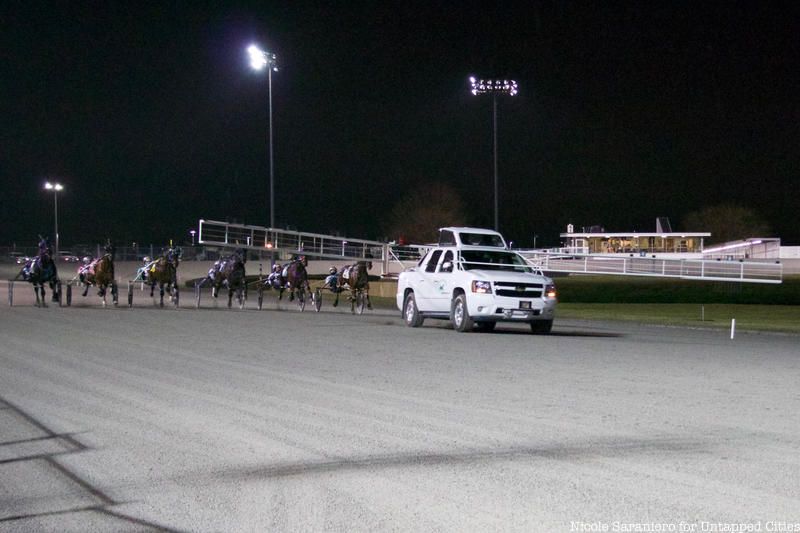
And they’re off! While most thoroughbred races start at a gate with horses stationary in pens, in harness-racing the horses are already moving when they get to the starting line. Horses are lined up in their positions and start to trot or pace behind a starter car that has motorized gates which fold up at the starting line. On our tour of Yonkers Raceway one lucky guests got to actually ride in the starter car and experience this amazing view:
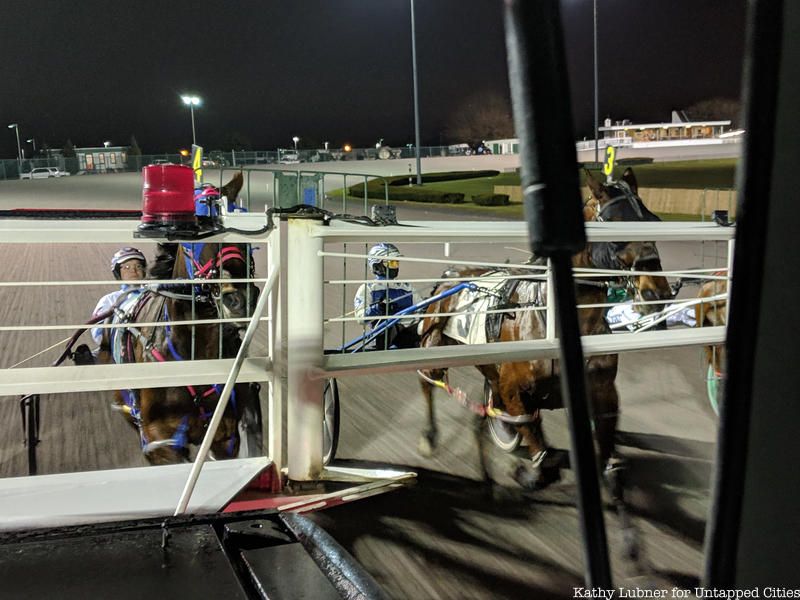

Just like human athletes, horses are drug tested to check for performance enhancing substances. After every race the winning horse must take a urine test, which is conducted in the paddock. Drivers can be subjected to random drug tests as well. There is always a vet on staff at the races to take care of any physical issues the horses may have.
The paddock is where horses and drivers wait and prepare for their races. Untapped Cities Insiders got to go inside on our special access tour. Check out some more pictures from our tour below.

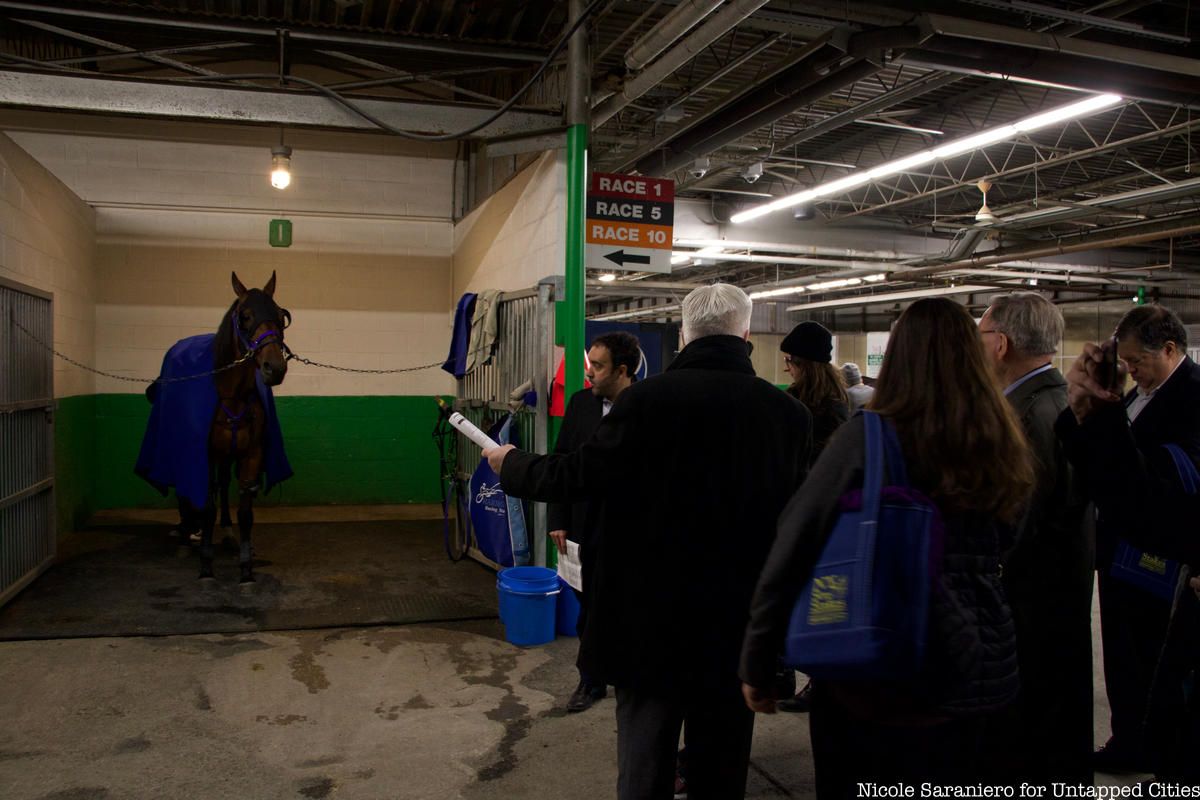


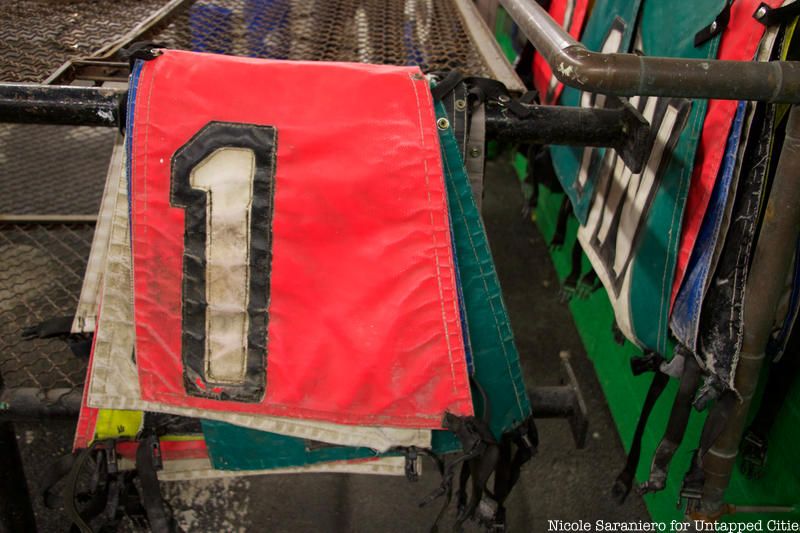


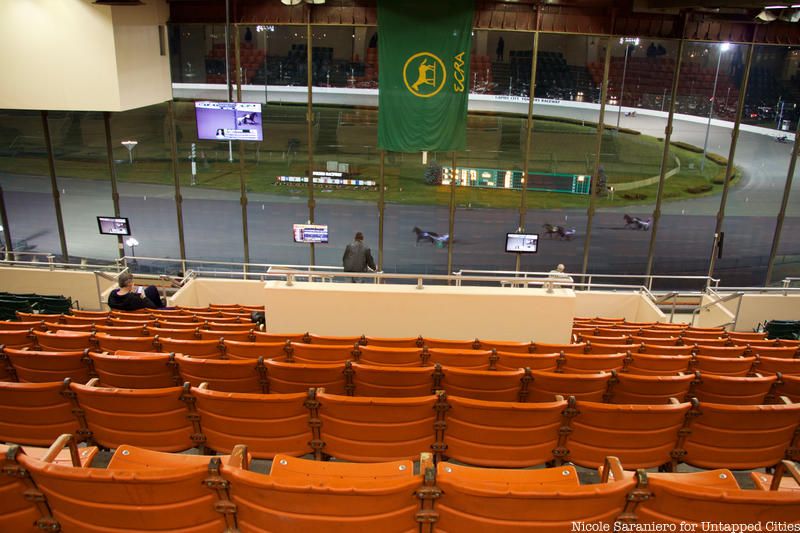



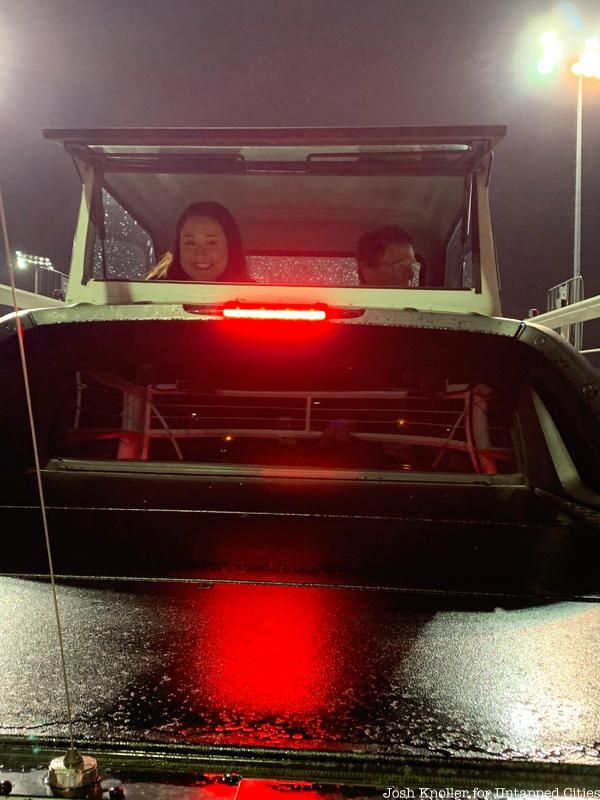


Next, check out A Day at the Races at Belmont Park, A Historic Track Just Outside Queens and A Day at the Races: Behind the Scenes at Monmouth Park Racetrack for the Haskell Invitational
Subscribe to our newsletter